QR Code and Micro QR Code
Overview
QR Code corresponds to a group of 2D square types that benefits from high data density and allows encoding streams of bytes and textual data composed of using Unicode symbols. Aspose.BarCode for Android via Java supports Extended Channel Interpretation (ECI) to encode Unicode data and provides various encoding modes; UTF8 is one of the most widely used encoding mode.
Reserving the minimum possible amount of data for error correction, the QR Code standard can be used to encode at most 7,089 numerical digits or 4,296 alphanumeric characters or 2,953 bytes. The other standard, Micro QR Code, allows encoding up to 35 numerical digits or 21 alphanumeric characters or 15 bytes. Micro QR Code serves to create considerably small QR Code images. However, it does not enable Extended Channel Interpretation (ECI) and does not allow encoding Unicode characters. In particular, Micro Qr Code barcodes corresponding to the M1 version can encode at most five numerical digits; the M2 version allows encoding up to ten numericals or six alphanumeric characters. This encoding capacity is usually suitable to work with industrial markers.
Main advantages of the QR Code symbology can be outlined as follows:
- large data density
- the capability to perform scanning and reading even for severely distorted barcode images
- the possibility of encoding streams of bytes
- high scanning and decoding speed
- the possibility to encode Unicode characters through ECI (not supported in Micro QR Code)
- several error correction modes; the maximal error correction level H allows restoring up to 30% of encoded information
It should be noted that considerable damages of target patterns in QR Code images can results in deteriorating barcode scanning and reading efficiency.
Generation Modes
Aspose.BarCode for Android via Java allows generating QR Code or Micro QR Code images corresponding to different versions. This can done through two methods of class QrParameters, i.e. setQrEncodeType (using values from the QREncodeType enum) and setQrVersion (with values from the QRVersion enum). By default, the AUTO setting is enabled.
The first way to set the required version of QR Code or Micro QR Code is to use the setQrVersion method. If data inputted for encoding does not occupy the entire capacity of the target version, padding characters are used to fill the leftover space. If barcode information exceeds the available capacity, barcode images cannot be generated, and the corresponding exception is thrown.
The second way to determine the desired QR Code generation mode is applicable when QRVersion remains set to AUTO. In this case, the setQrEncodeType method can be used to select the barcode type according to the input data size. The QREncodeType enum can take the following values:
- AUTO: firstly, the library aims to identify the most appropriate Micro QR Code version from M1 to M4. If no suitable version is found, the library iterates over supported QR Code versions from Version 01 to Version 40. If the data to be encoded does not fit to the data capacity of Version 40, an exception is thrown.
- FORCE_QR: the most appropriate QR Code version is automatically selected among options from Version 01 to Version 40.
- FORCE_MICRO_QR: the library aims at selecting the most applicable Micro QR Code version from M1 to M4. If the input data exceeds the data capacity of the M4 verion, an exception is thrown.
Automatic Version Setting
The following sample barcodes images are given to explain how to create different types of QR Code using varios automatic version setting modes.
| Generation Mode | AUTO | FORCE_QR | FORCE_MICRO_QR |
|---|---|---|---|
 |
 |
 |
Manual Version Selection
In Aspose.BarCode for Android via Java, developers can manually select the desired QR Code version for barcode generation. In this case, it is required to call the setQRVersion method of class QrParameters passing a value from the QRVersion enum, i.e. from VERSION_01 to VERSION_40 for QR Code or from VERSION_M1 to VERSION_M4 for Micro QR Code. The following barcode images are intended to explain how to create QR Code barcodes using manual settings to define the requested version.
| Version | QR Code VERSION_05 | Micro QR VERSION_M4 |
|---|---|---|
 |
 |
Encoding Modes
Aspose.BarCode for Android via Java enables the variety of widely used data encoding specifications, such as Unicode and others. Developers can select the desired encoding mode through the setQrEncodeMode method of class QrParameters passing a value from the QrEncodeMode enum that includes the following options:
- AUTO: information inputted through the setCodeText method gets encoded using the value set through the setCodeTextEncoding method (UTF8 is applied by default).
- BYTES: is intended to encode byte streams and allows encoding digits from 0 to 255. In cases when a byte stream includes digits larger than 255, the library applies the UTF16LE.
- UTF_8_BOM and UTF_16_BEBOM: allow encoding barcode data in UTF8 and UTF16BE encodings. The first character is encoded as a byte order mark (BOM) character to denote the enabled encoding. However, the ECI_ENCODING mode is recommended for use because it is more suitable to set the encodings suitable for the QR Code standard.
- ECI_ENCODING: applies encodings from the list defined in the ECIEncodings class.
- EXTENDED_CODETEXT: in addition to main information, barcode data must include special control words that are required to establish improved controls over the data encoding process; in this mode, textual parts with various encodings can be stored in one QR Code barcode.
AUTO Mode
To encode input data when the AUTO encoding mode is enabled, the library applies the encoding defined through the setCodeTextEncoding method. If the required encoding is not specified explicitly, UTF8 is applied.

BYTES Mode
When the BYTES encoding mode is used, input information presented in a form of a plain byte stream is trasnformed to an array of symbols and then to a string. Digits from 0 to 255 can be encoded. If a byte stream contains digits larger than 255, this symbol gets encoded as two bytes in the UTF16LE encoding (the lower byte is put first).

UTF_8_BOM and UTF_16_BEBOM Modes
The library provides two special encoding modes called UTF_8_BOM and UTF_16_BEBOM that serve to encode information according to UTF8 and UTF16BE specifications. A byte order mark (BOM) symbol is added as the first digit.
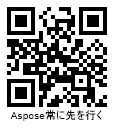
ECI_ENCODING Mode
The ECI_ENCODING encoding mode suggests applying one of the encodings listed in the ECIEncodings class. Aspose.BarCode for Android via Java supports the variety of widely used encodings. In this mode, the extended channel interpretation (ECI) identifier is added to denote the enabled encoding to transfer the information about it to decoders. It is recommended to use the UTF8 value.

EXTENDED_CODETEXT Mode
Aspose.BarCode for Android via Java supports the EXTENDED_CODETEXT mode that allows customizing settings for the QR Code generation process manually. This mode enables activating the multi-ECI mode and adding FNC characters (special symbols to differentiate between fields in variable-length identifiers) to work with extended textual information. The library provides a special class called QrExtCodetextBuilder that facilitate using with this encoding mode. When the multi-ECI mode is enabled, barcode information gets processed for all predefined encodings automatically. In all other cases, the encoding defined through the setCodeTextEncoding method is applied.

Error Correction Level
The QR Code group of barcode standards provides four types of Reed-Solomon error correction (EC). The error correction mechanism prescribes storing redundant data to facilitate automatic error detectiion and correctiion in the case of barcode image distortions or damages. Basically, to recover 1% of corrupted data, 2% redundancy is required.
Following error correction levels are supported for QR Code symbologies.
| Error Correction Level | Data Recovery Capacity |
|---|---|
| Level L | 7% |
| Level M | 15% |
| Level Q | 25% |
| Level H | 30% |
For all QR Code subtypes with the exception of Micro QR, developers can use any error correction level. For Micro QR, different subtypes are compatible with specific EC levels only, i.e. M1 enables EC level L; M2 - levels L and M; M3 and M4 - levels L, M, and Q.
| Error Correction Level | Level L | Level M | Level Q | Level H |
|---|---|---|---|---|
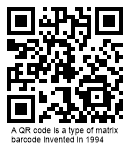 |
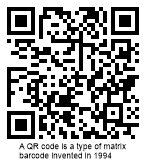 |
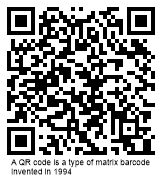 |
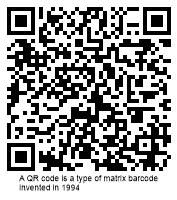 |
Structured Append Mechanism
QR Code types (except Micro QR) support the possibility to generate composite barcodes using the structured append mechanism. In this mode, the input data can be divided among different QR Code barcodes and then composed into a single image. Aspose.BarCode for Android via Java does not enable distributing input barcode data across several QR Code barcodes; however, it allows creating a composite QR Code label manually. This can be done through the setStructuredAppend method passing an object of lass QrStructuredAppendParameters class. This class provides the following methods:
- setTotalCount - the number of barcodes in a composite QR Code image (can take values from 2 to 16)
- setSequenceIndicator - the sequence number of the current barcode (starting from 0)
- setParityByte - a byte that serves as a checksum identifier. In the general case, it is calculated as XOR of all bytes in which UTF16BE symbols are encoded using two bytes
Sample barcode images provided below have been created using the structured append mechanism.
| Structured Append Type | First Type | Second Type |
|---|---|---|
 |
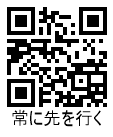 |
Aspect Ratio Settings
Aspect Ratio is the ratio between the height and the width of a barcode. To adjust barcode proportions using the X and Y coordinates in Aspose.BarCode for Android via Java, it is required to use the setAspectRatio method of class QrParameters. This property is defined as a relative coefficient to the value of XDimension parameter. Generally, the value of AspectRatio should be set to 1. When it is necessary to adjust the proportions of generated QR Code barcodes, the setAspectRatio method can be used. Sample barcode labels shown below have been generated using different aspect ratio settings.
| Aspect Ratio | Is Set to 1 | Is Set to 2 |
|---|---|---|
 |
 |